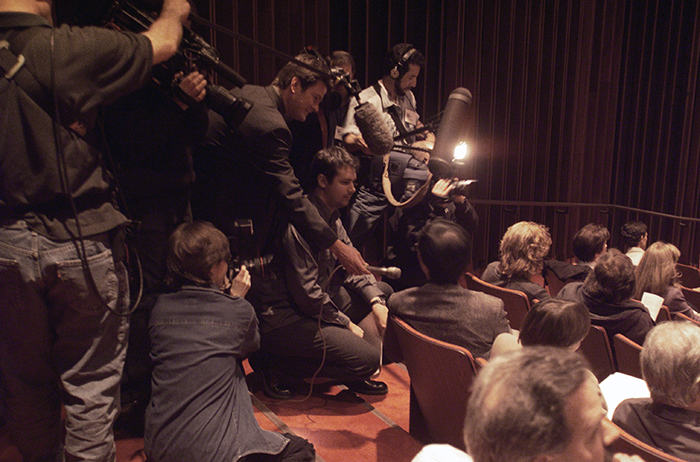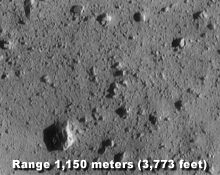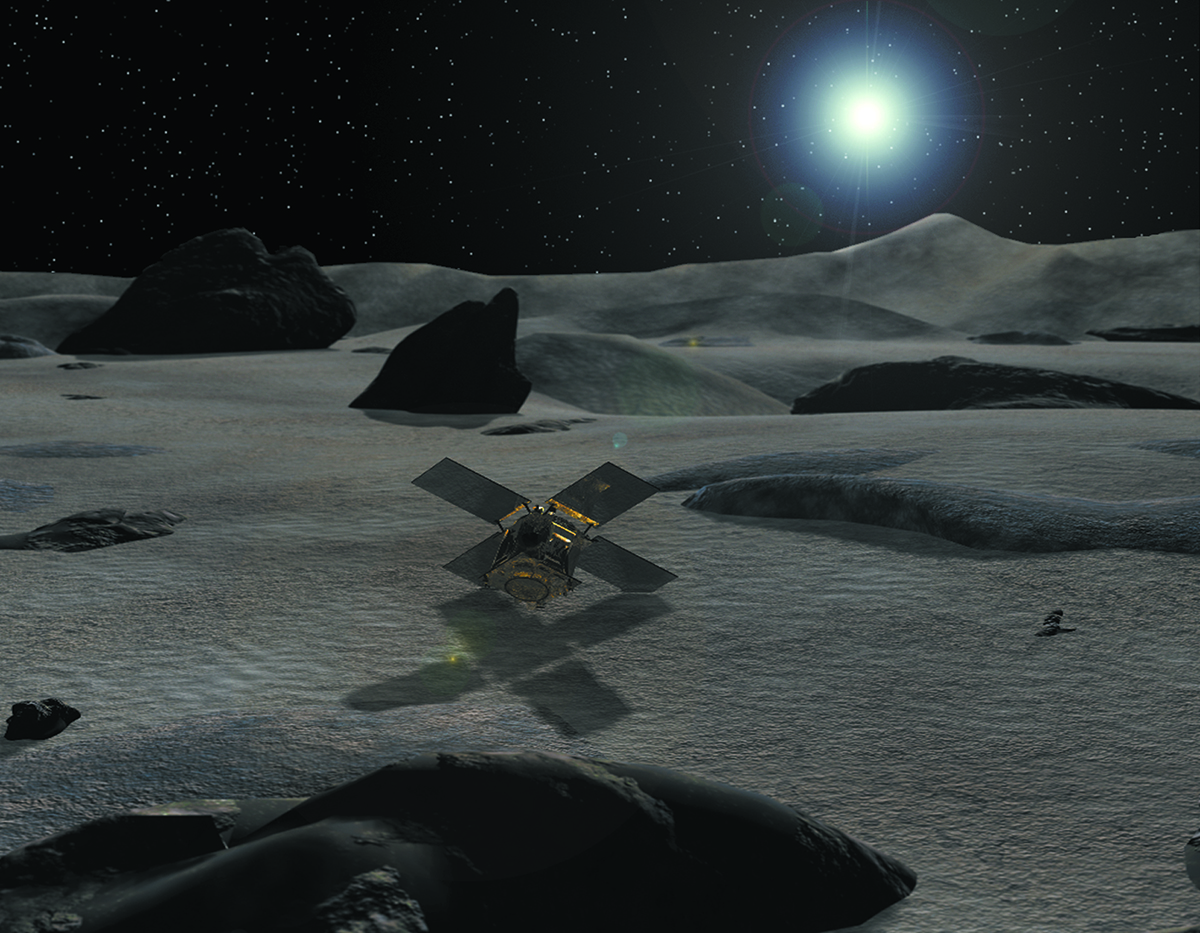News
NEAR Landing Left a Lasting Space Exploration Legacy

Credit: Johns Hopkins APL
Twenty years ago this week, Andy Cheng sat in the back row of the Kossiakoff Center auditorium, his eyes fixed on the large screen, following a stream of black-and-white images being transmitted from a car-sized spacecraft that, 200 million miles from home, was making history by landing on the surface of an asteroid for the first time.
The last of the pictures sent back from the APL-built NEAR Shoemaker spacecraft — before the signal was interrupted by the bumpy touchdown on Feb. 12, 2001 — depicted the dusty, boulder-strewn surface of asteroid 433 Eros in striking detail, the closest look ever at one of the rocky bodies scientists consider to be building blocks of the planets.
“Watching that event was the most exciting experience of my life,” Cheng, the NEAR project scientist from the Johns Hopkins Applied Physics Laboratory (APL) in Laurel, Maryland, wrote in his last blog on the NEAR (Near Earth Asteroid Rendezvous) website. “I was asked immediately afterwards how I felt, and I mumbled something about being tired and happy, but I missed the point. I realized afterward what I should have said: It was like watching Michael Jordan on the basketball court, when the game is on the line and he is in the groove. One miracle after another unfolds, and we are left stunned and speechless.”
A carefully designed series of descent maneuvers brought the spacecraft to Eros’ surface at 3:01:52 p.m. EST, ending a journey of more than 2 billion miles around the inner solar system and a full year in orbit around the 21-mile-long, potato-shaped space rock. The touchdown velocity of less than 4 miles per hour — essentially walking speed — was one of the softest planetary landings in history.
Despite being an orbiter that was not designed to land, NEAR Shoemaker continued operating and communicating with the NEAR mission team at APL. Jumping at the chance to get “bonus science” from the spacecraft, which had already collected 10 times more data than originally planned over its original mission, the team asked for and got a 10-day extension and then four more days of Deep Space Network antenna time, enabling NEAR Shoemaker to send back data through Feb. 28, 2001.

Credit: NASA/Johns Hopkins APL
“These were important science operations — decisive gamma-ray measurements of elemental composition demonstrating the primitive nature of the asteroid, measurements that could not be made from orbit,” recalled Cheng, who now serves as chief scientist in APL’s Space Exploration Sector.
NEAR Shoemaker snapped 69 detailed pictures during the final 3 miles of its descent, at the time the highest-resolution images ever obtained of an asteroid. The camera delivered clear pictures from as close as 394 feet, showing features as small as just inches across. The images also included several things that piqued the curiosity of NEAR scientists, such as fractured boulders, a football-field-sized crater filled with dust, and a mysterious area where the surface appeared to have collapsed.
NEAR launched on Feb. 17, 1996 — the first in NASA’s Discovery program of low-cost, scientifically focused planetary missions — and became the first spacecraft to orbit an asteroid on Feb. 14, 2000. The landing event itself was unprecedented at APL. The Kossiakoff Center was packed with mission team members, family, friends and media watching the images and reports direct from NEAR mission operations in Building 13. An audience of millions also watched via NASA TV and the web.
“We’ve since seen asteroid landings by the Japanese Hayabusa missions and by the NASA OSIRIS-REx mission, and a comet landing by the European Space Agency’s Rosetta mission,” Cheng said. “The NEAR landing on Eros was truly a trailblazing accomplishment, pointing the way for future missions.”
